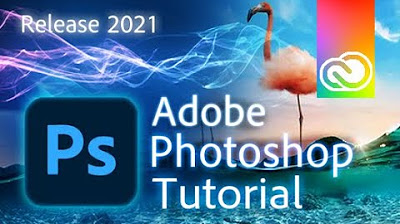Pertemuan 1 - Digital Imaging - Raden Daniel Wisnu Wardhana
Summary
TLDRIn this Digital Imaging course by Raden Daniel Wisnuardana, students will explore the philosophy and practical applications of digital imaging, including photography, design, and editing. The course covers foundational concepts such as image formats (vector and bitmap), the digital imaging process, and the tools used in creating digital content. Students will also learn how to curate digital artwork and apply image processing techniques. With a focus on real-world uses in media and advertising, the course prepares students to harness digital imaging for creative and professional purposes, assessed through assignments, exams, and class participation.
Takeaways
- 😀 The course 'Digital Imaging' is designed to equip students with knowledge about techniques and methods for processing, compressing, storing, and printing digital images.
- 😀 The course includes 16 sessions, with the first session covering the philosophy of digital imaging, course description, and an introduction to photography.
- 😀 Photography concepts such as exposure triangle, composition, and angle will be explored in the course.
- 😀 The course will discuss how images move between different media, from cameras to software, as well as the applications used in digital imaging.
- 😀 Students will learn how to curate digital image works as part of the course, with practical video conferences and discussions on image creation and processing.
- 😀 The grading for the course is divided into four components: attitude (30%), assignments (20%), mid-term exam (20%), and final exam (30%).
- 😀 Digital images are created by digital devices and can include photos, videos, and other visual formats.
- 😀 'Digital Imaging' refers to the process of converting images or manuscripts into digital formats for use in various applications.
- 😀 The course differentiates between vector images (created from lines and shapes) and bitmap images (composed of pixels), highlighting the different processes used for each type.
- 😀 The main functions of digital imaging include image layout, image processing, and manipulating elements such as adding text or background changes to photos or videos.
- 😀 Digital imaging plays a vital role in various industries, including branding, social media (Instagram, TikTok, YouTube), and management applications involving visual structures and layouts.
Q & A
What is the primary focus of the Digital Imaging course described in the script?
-The primary focus of the Digital Imaging course is to teach students about digital imaging techniques, including photography, design, and applications in digital media. It aims to help students understand how to process, compress, store, and print digital images.
What does the RPS (Rencana Pembelajaran Semester) outline for the course?
-The RPS outlines the learning plan for the entire semester, which includes 16 sessions. It covers topics such as the philosophy of digital imaging, photography introduction, digital imaging techniques, and the process of curating digital works.
What topics will be covered in the first session of the course?
-In the first session, students will learn about the philosophy of digital imaging and the course description, including an introduction to digital photography, the role of digital imaging, and its applications across different media such as cameras, computers, and gadgets.
How is the assessment in the Digital Imaging course structured?
-The assessment is divided into four components: 30% for attitude and behavior, 20% for assignments, 20% for the mid-term exam (UTS), and 30% for the final exam (UAS).
What is the difference between digital images and digital imaging?
-Digital images are pictures or photos created by digital devices, while digital imaging refers to the process of converting physical images, manuscripts, or data into digital formats, involving editing and processing of images to create digital representations.
What are the two types of image formats discussed in the course?
-The two types of image formats discussed are vector images and bitmap images. Vector images are made up of lines and shapes, while bitmap images are made up of pixels.
How does digital imaging function in the context of design and media?
-Digital imaging functions to layout or enhance images, such as in product photography, posters, or social media content. It allows the addition of text, emojis, or elements to images, and can also involve manipulating photos or videos.
What is the role of digital imaging in modern media, especially social media?
-Digital imaging plays a significant role in modern media, especially on social media platforms like Instagram, TikTok, and YouTube, where it is used to create and share visually appealing content. It also plays a crucial role in the design of advertisements and marketing materials.
What are the main tools or workstations used in digital imaging?
-The main tools for digital imaging include cameras (entry-level, mid-range, and digital SLRs), computers (personal computers and laptops), and scanners (which can range from portable models to specialized scanners for photos).
What are the benefits of digital imaging mentioned in the script?
-The benefits of digital imaging include helping brands communicate their messages visually, ensuring high-quality visuals that align with creative goals, and enabling the creation of unique, original, and sometimes non-mainstream works of art.
Outlines

This section is available to paid users only. Please upgrade to access this part.
Upgrade NowMindmap

This section is available to paid users only. Please upgrade to access this part.
Upgrade NowKeywords

This section is available to paid users only. Please upgrade to access this part.
Upgrade NowHighlights

This section is available to paid users only. Please upgrade to access this part.
Upgrade NowTranscripts

This section is available to paid users only. Please upgrade to access this part.
Upgrade NowBrowse More Related Video

Pertemuan 2 - Digital Imaging - Raden Daniel Wisnu Wardhana

IM 1 Introduction to Multimedia

Computed Radiography CR Cassette Reader - Digital Radiography

Thermal Master P2 vs FLIR ONE Which Should You Choose for Inspection?

Photoshop 2021 - Tutorial for Beginners in 13 MINUTES! [ COMPLETE ]

What is DICOM | PACS & VNA Fundamentals
5.0 / 5 (0 votes)